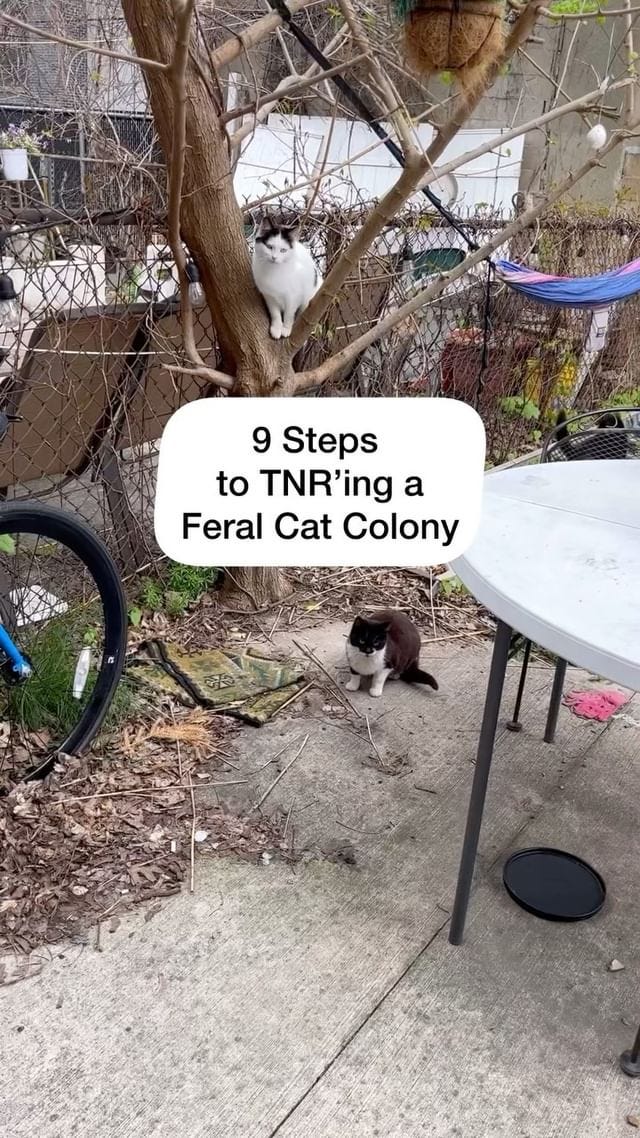What's New Pussycat?
I'm just a girl, talking to herself as if she was her cat, talking to you about something you didn't realize was a crisis
This post is too long to appear in full in your inbox. I don’t know where it will cut off in the email version, but it will be available online. See you there!!!
Be honest: when I said that I planned on experimenting with format and style in E4P’s third year, did any of you think I would dedicate a whole piece to interviewing my cat? I promise this isn’t a cry for help but rather the way my brain dreamt up a way to celebrate Adopt a Shelter Cat Month…which I say as a kind of quasi-apology.
Although Cat herself wasn’t adopted from a shelter, I’ve followed several rescuers and rescues since taking her in and care deeply about New York City’s ongoing cat overpopulation crisis. This week—and I cannot make this up—I talked with my cat, Cat, about the history of black cats, what’s going on with cat populations around the country and in NYC specifically, and how to make the Universal Cat Distribution System work for YOU!
Cat Cohn LaRue is a Pisces Sun, Aries Moon, Scorpio Rising. She was recently an extra on both Vanderpump Rules and Below Deck: Mediterranean, but she has yet to receive her check from Bravo. While you may know her from Instagram, Cat got her start in influencing as a LuLaRoe rep. She’s a girlboss who’s unapologetically #real and #fierce. Despite apperances, she really considers herself more of a golden retriever.
When Emily Met Cat
For the first year and a half of her life, Cat lived in the basement of my building, splitting her time evenly between the laundry room, the trash shute, and outside. She was skinny as a result of neglect—she was fed infrequently in the hopes that she’d do a better job as a mouser and eat any rodents the poison traps couldn’t kill.
From the moment I met her, she has been a raging bitch and I have done everything I can to get her to love me as much as I immediately loved her.
Whenever I tell someone I have a cat named Cat, they have one of three actions: they either ask, “Spelled K-A-T or like the word cat?,” laugh more at me than with me, or correctly guess the name’s cinematic origins. I know I mentioned it once in passing but she is, in fact, named Cat because my mother showed me Breakfast At Tiffany’s when I was eight years old and, of course, all of adulthood hinges on the things we loved in our pre-pubescent years.1
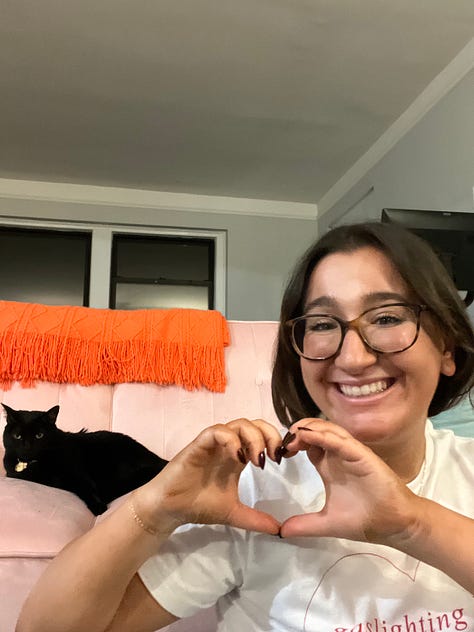
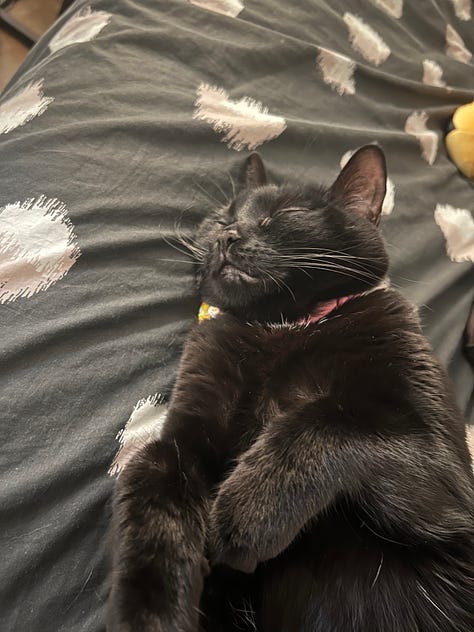
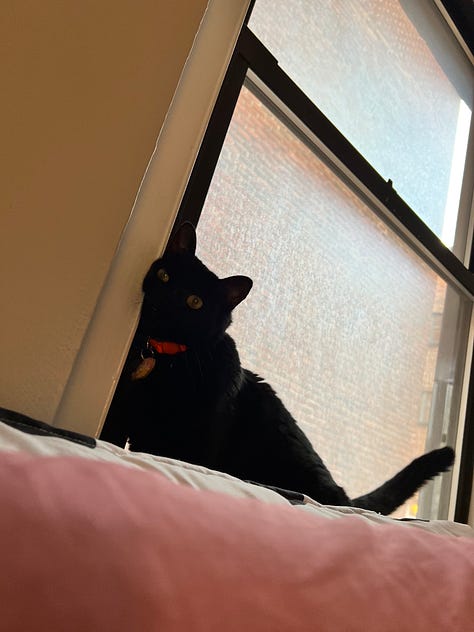
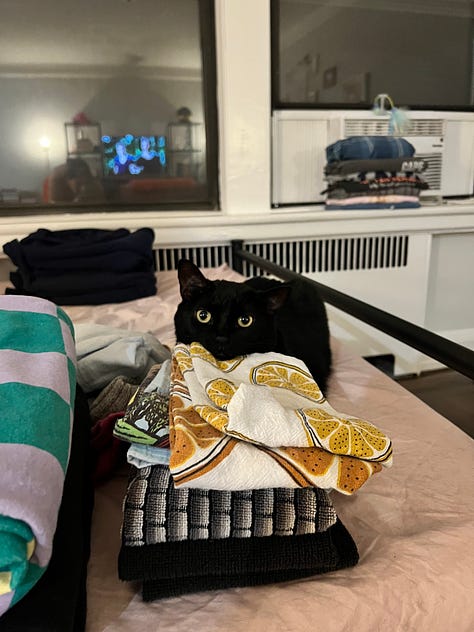
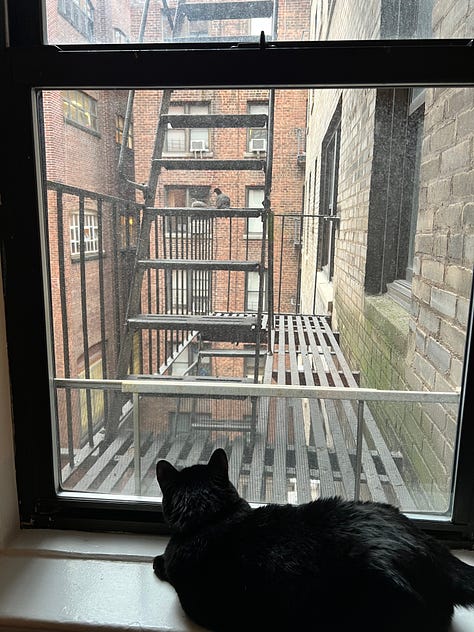
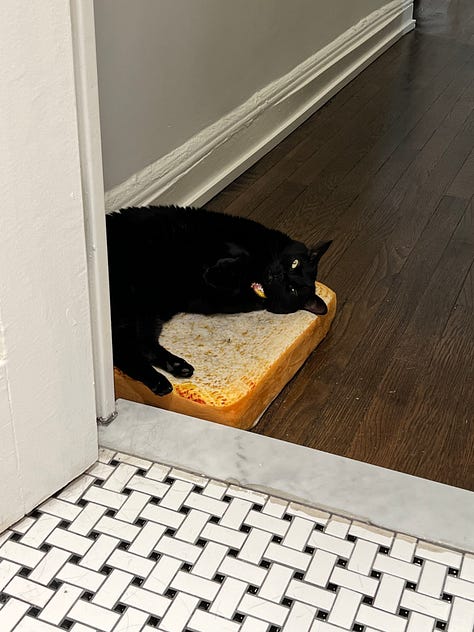

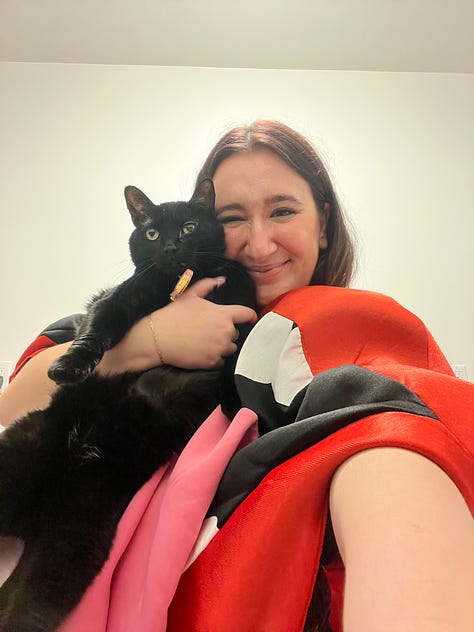
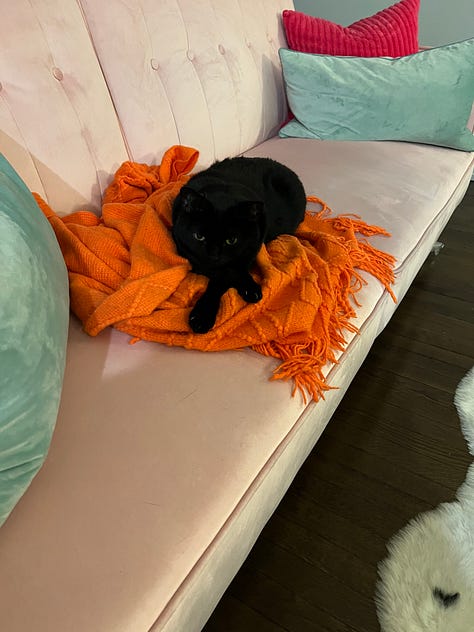
Adopting a semi-feral cat wasn’t the easiest thing I’ve ever done. Even with the support of my sister and my neighbor who has been trapping, neutering, and releasing strays around New York City for decades, it still took two months of conning Cat into trusting me with food multiple times a day, every day, before I could bring her upstairs. Gratefully, she quickly acclimated to her new life, as lounging on a baby pink velvet couch and choosing to only eat gravy food was much easier than fighting with the two other cats she had lived with down in the basement.
I’ve tried my hardest to make up for anything that happened in the time before I knew her and to build the best life I can for her now. Even though she’d probably just say I don’t give her enough Tiki Cat Gravy Stix, I still wanted to ask if appreciates all I’ve done for her:
Emily: How do you feel being my cat?
Cat: Trust that we will be talking about the “your cat” comment later but, in general, I like it. It’s nice to be able to put my face really close to yours in the morning and know there will be more food in my bowl soon after. Those claws you glue on for me are really phenomenal for scratching, but you don’t always pet me how I want to be pet.
Emily: How do you want to be pet?
Cat: Don’t worry about it. I also love that box you put in the closet for me. Great box, so good.
Emily: You know you have two actual beds in the apartment—
Cat: And the couch!!! The couch is mine, too! Don’t forget that.
Emily: Of course. How could I?
I’ve previously written about how I spent much of the summer of 2020 manifesting a black cat, largely because I loved our neighbor’s cat who would roam into our yard and wanted a pet just like her. I never saw that as a niche desire but because black cats have a lot of weird superstitions tied to them, I wanted to dig a little and find out why they’re often associated with witchcraft, darkness, and bad omens.
Black cat lore appears to start in Ancient Greece where cats were described as a pet of Hecate, “goddess of magic, sorcery, the moon and witchcraft” (X). While it doesn’t seem like Hecate’s cats were specifically black from what I’ve been able to find, their connection with her laid the groundwork for Pope Gregory IX’s official church document, “Vox in Rama.”
Having nothing better to do in 1233, the Pope
issued the Vox in Rama to King Henry of Germany. The bull began by bewailing the various woes that afflicted the church- the most recent being the satanic cult identified by Conrad of Marburg as flourishing in Northern Germany. The bull called upon the bishops of Mainz and Hildesheim to lend Conrad their full support in rooting out these witches. It also provided a remarkably full account of their Satanic rite. This description created an image that was to be used for all future depictions of witches’ sabbats- and one that established the cat as a creature of the devil.
The account began by describing the initiation of novices to the coven. Firstly, they are greeted by an abnormally large frog or toad, whose behind they must kiss and then a “man of fearful pallor” and thinness whose task was to suck out “every last remnant of faith in the Catholic Church” from their soul. The novice then feasted with the rest of the congregation, after which they assembled to pay homage to “a black cat” which emerged ” from a kind of statue which normally stands in the place where these meetings are held.”
The whole coven was required to kiss the cat’s behind, and once they had done this, a wild sexual orgy occurred. Once the lights came back on, “from a dark corner, the figure of a man emerges.” This ‘man’ was Lucifer, who the whole company firmly believed to have been wronged by God. As was to be expected of a former angel “The upper part of his body from the hips upward shines as brightly as the sun.” However, his fall from grace was encapsulated by his lower body where “his skin is coarse and covered with fur like a cat” (X).
According to a piece in History Collection, “the belief that the torture or killing of cats could break spells continued across northern Europe. Denmark’s Fastelavn held at the start of Lent was based on the premise that for spring to begin, evil had to be banished. That evil came to be neatly personified in the form of black cats that were beaten to death to purge the new season of evil spirits.”
As we all know, the worst thing a woman can be is a witch. Author and Wiccan priestess Cerridwen Fallingstar explained to The History Channel that “‘cats, like the women accused of witchcraft, tend to exhibit a healthy disrespect of authority…They don't fawn, like dogs, upon even the unworthy. In the church, neither independent women, nor independent animals, were to be tolerated.’” Black cats were seen as the familiars of witches which is what led to the most popular superstition about them: “‘a black cat crossing your path might very well be on a mission from a witch…Just as easily, it could be the devil in disguise—and no one wants to cross paths with the devil’” (X).
In fairness, not all of the lore around cats—and black cats specifically—is negative. Ancient Egyptians worshipped Bastet, the goddess of protection, pleasure, and the bringer of good health, who was the only deity able to transform into a cat.2 According to National Geographic Kids, “Egyptians believed cats were magical creatures, capable of bringing good luck to the people who housed them…Cats were so special that those who killed them, even by accident, were sentenced to death.”
The Massachusetts Maritime Academy published a piece on their blog last year and explained that “British and Irish sailors once believed that bringing a black cat on a ship would bring good luck to the vessel and those that sailed on it.” Similarly, several articles I found mentioned that “Welsh folklore depicts black cats would bring luck to a home and could even be a reliable weather predictor.”
With all of that said, I couldn’t help but ask:
Emily: Are you good luck or bad luck?
Cat: Literally shut the fuck up.
While Cat was fortunate to have crossed my path, black cats in shelters are often shit out of luck. A study published in the scientific journal Animals (Basel) in 2020 found that between 2010 and 2011 in a Kentucky animal shelter, “black cats had the highest rate of euthanasia (74.6%) and the lowest rate of adoption (10.0%) of any color.” The authors of the study were careful to say that although black cats fared worse than those of any other color, this study didn’t overwhelmingly prove that the “Black Cat Bias” is true.3
However, the study did show the staggering rate at which shelter cats are euthanized rather than adopted. The first line of the results section reads that out of 9,693 cats, regardless of coat color, “the most frequent outcome by far was euthanasia (see Table 1): there were 5,649 euthanizations (70.8%), 1,048 adoptions (13.1%), and 1,286 transfers (16.1%).” The authors explain that
although the strength of the findings regarding color (even involving black cats) were weak at best, it seems important to remember that the outcome studied was literally life or death; even a small reduction in the likelihood of euthanasia seems important if considered from the perspective of a sheltered animal. Further, it is likely that a large number—if not a majority—of these cats were suitable for adoption by way of health and disposition; in these cases, some argue that euthanasia should be considered killing instead, as the former connotes alleviation of suffering, particularly when there is little or no possibility of improvement.
I hate to E4P-ify this conversation but I fear we have to break this down.
Not to Literally Be Debbie Downer About It…
Back in October 2022, I talked with my sister about the rise in pet homelessness after the first two years of the pandemic. As Audrey explained,
Audrey: Pet homelessness is an issue highlighting the millions of dogs and cats in the world that are strays or live in shelter settings. Contributions to pet homelessness include pet overpopulation, breed prejudices, and owner’s deficiency of necessary resources. Pet overpopulation typically is caused by the lack of spay and neutering services and unethical breeding which results in more animals in need of a shelter.
Last summer, there were countless reports that New York City was experiencing a feral cat overpopulation crisis “with estimates ranging from 500,000 to 1 million cats now living on the city streets,” according to a Curbed article. This problem “grew when free spaying and neutering services were paused during COVID and now, with more evictions and financial pressures driving owners to give up their pets, shelters are reaching capacity across the city” (X).
While I haven’t been able to find any reports from this year, feral cat colonies tend to grow exponentially over the summer during “kitten season” so it’s likely we’re just on the cusp of the uptick.
But what does any of this mean?
No part of cat overpopulation is safe—for the cats or their general ecosystem. While those horrifying statistics at the end of the last section were from 2010-2011, the most current data available is not much better: as we’ve previously discussed, at least “6.3 million animals will enter a shelter every year, and between 300,000 and 1 million will be euthanized.” Combining that information with the aforementioned fact that many people can no longer afford their pets led the New York Times to report that “some people, fearing that their unwanted cats would be euthanized if they were taken to a shelter, simply let them out on the streets and hoped for the best.”
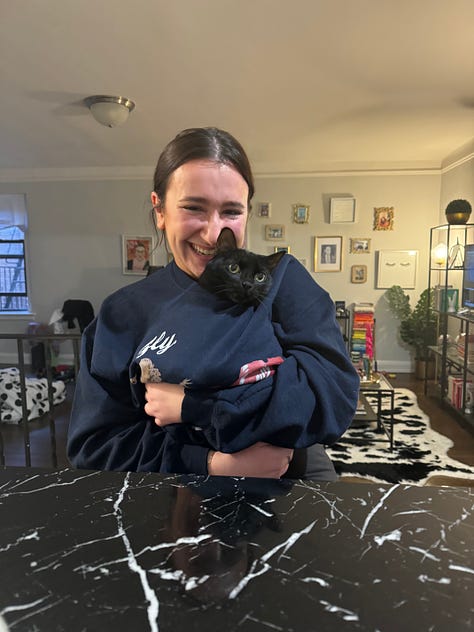
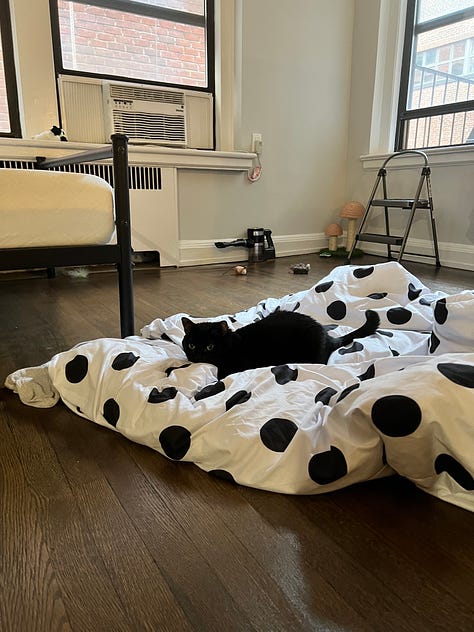
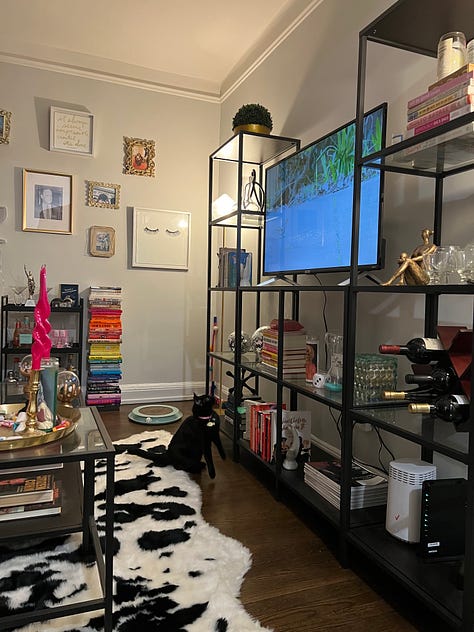
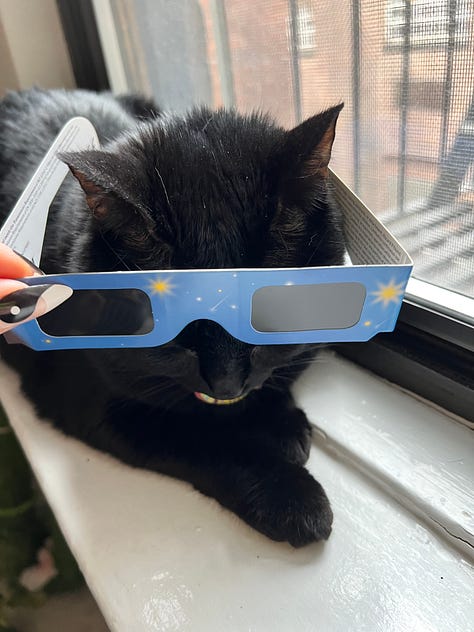

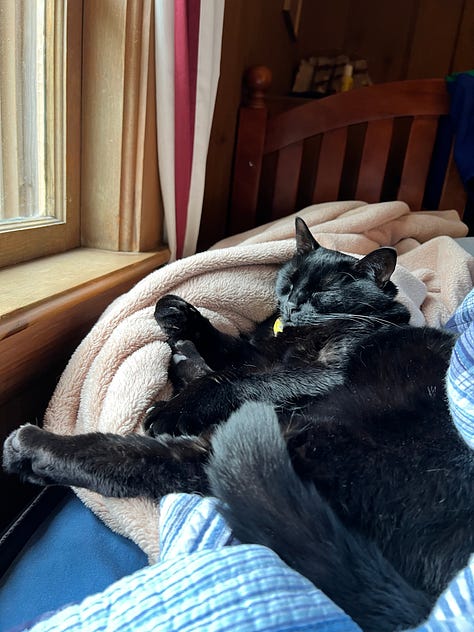

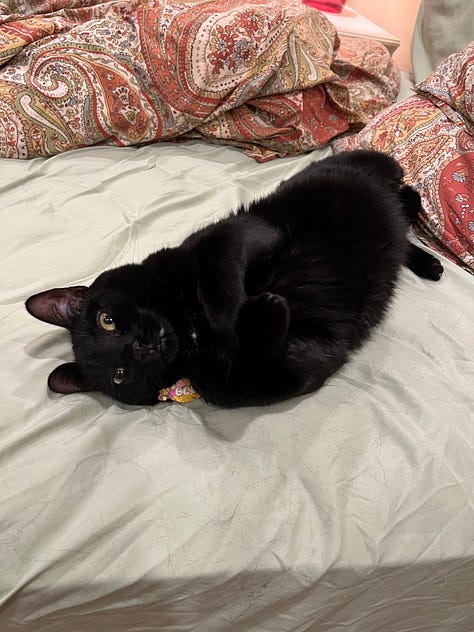
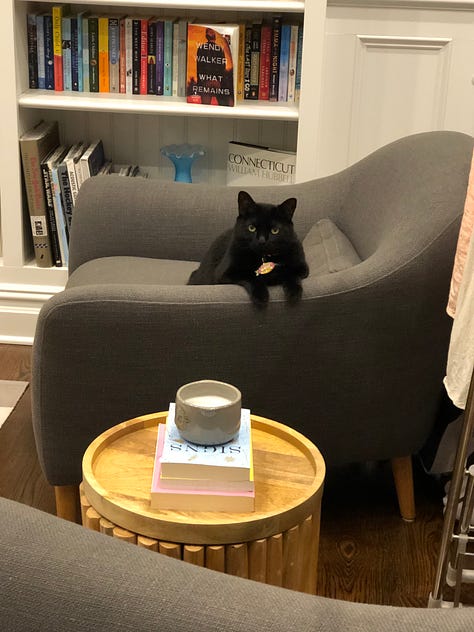
So now there is an exploding population of feral cats encountering a number of formerly domesticated cats just out on the street. As the Times piece explained,
eight out of 10 street kittens die within their first six months. Those that survive are often disease-ridden. Winters here can be deadly for a species that originated in the Mediterranean climate of North Africa. And traffic takes a big toll. Even the hardiest and savviest feral cats live an average of only four years, less than a third of the life span of indoor cats.
In addition to this, “outdoor cats kill 2.4 billion birds annually in the United States” (X). Fun fact: feral cats notably do not kill rats, especially in New York City where the rat population somehow—mind-bogglingly—outnumbers the outdoor cat population.
Reading all of this is a little jarring and you may be asking yourself who is stepping up to take care of it. Right now, local non-profits are leading the charge with a tactic called TNR—trap, neuter, release. Feral cats are trapped, spayed or neutered, and then returned to their colonies but without the ability to continue producing litters. The effort is intended to reduce the size of colonies thereby minimizing the future number of feral cats roaming the streets.
Unfortunately, there is pushback against this practice as well as very little support from the Health Department and the Mayor’s Office of Animal Welfare. But what other solution is there? Since Audrey and I spoke nearly two years ago, shelters remain overcrowded:
according to National Animal Welfare Statistics, 6.5 million animals entered shelters in 2023, with just over 6 million leaving. Between 2022 and 2023, the number of animals waiting to get out of shelters increased by 177,000 (X).
As a result, “over 70% of all cats entering animal pounds and shelters in the United States are killed, according to the most comprehensive research to date” (X). There is no quick-fix solution here but there is awareness. I know people prefer dogs over cats and that’s because cats need a better PR strategy (Tree Paine, if you’re reading…), but just because you might not want a cat in your home doesn’t mean you can’t care about them.
By keeping up with this problem and supporting others who are working hard to mitigate and fix it—even if you don’t want to get involved with a cat yourself, weirdo—we can start to make strides in bettering the lives of these cats. They’re bizarre, magical, Satanic creatures who need our help in whatever way we can offer it.
Be Your Own Cat Distribution System
The majority of this piece was written with Cat’s butt pressed against my leg, and the rest was written with her flopped on her side next to me in a full REM cycle.
I learned she has separation anxiety this year which has caused a lot of problems and cost me a lot of money. Although I’ll joke about it, it reminds me of how I asked my sister if Cat would ever fully love me after the first few months I had her. Back then, she was hesitant to sit close to me for too long and now she loves me so much, she’ll pee all over my bed to combine our scents when she misses me.
I’m the first to make cat lady jokes at my own expense and complain about Cat being a brat,4 but I also think a lot about what my world will look like when she dies. I’m very aware of how morbid and insane that sounds—especially because she is absolutely going to live forever out of spite—but now that she’s here, I genuinely don’t know what I’m going to do without her. She has brought so much happiness, laughter, shredded hair, incredibly conditional love, and piss into my life and has taken up so much of the real estate in my heart despite never paying a damn cent in rent…freeloader.
Here I am overly confessional as a means of sharing two things: one, to always say yes if you’re chosen by the Universal Cat Distribution System, and two, how you can become your own Universal Cat Distribution System.
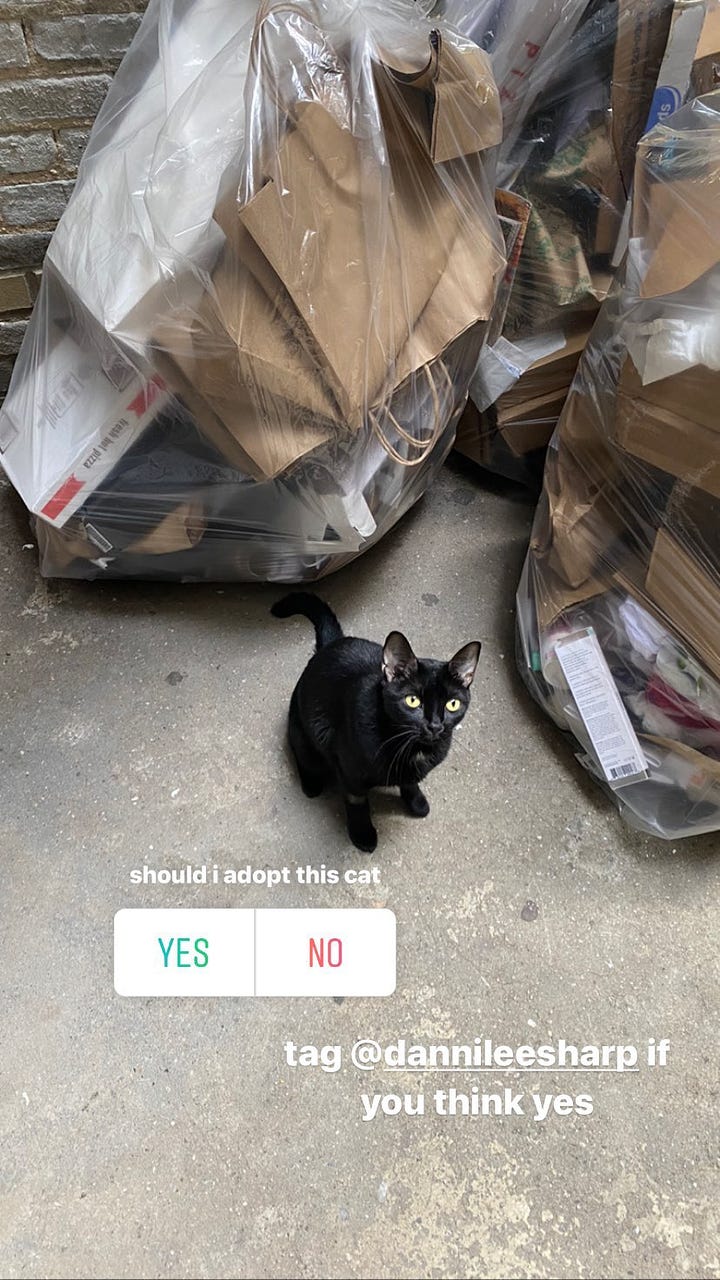
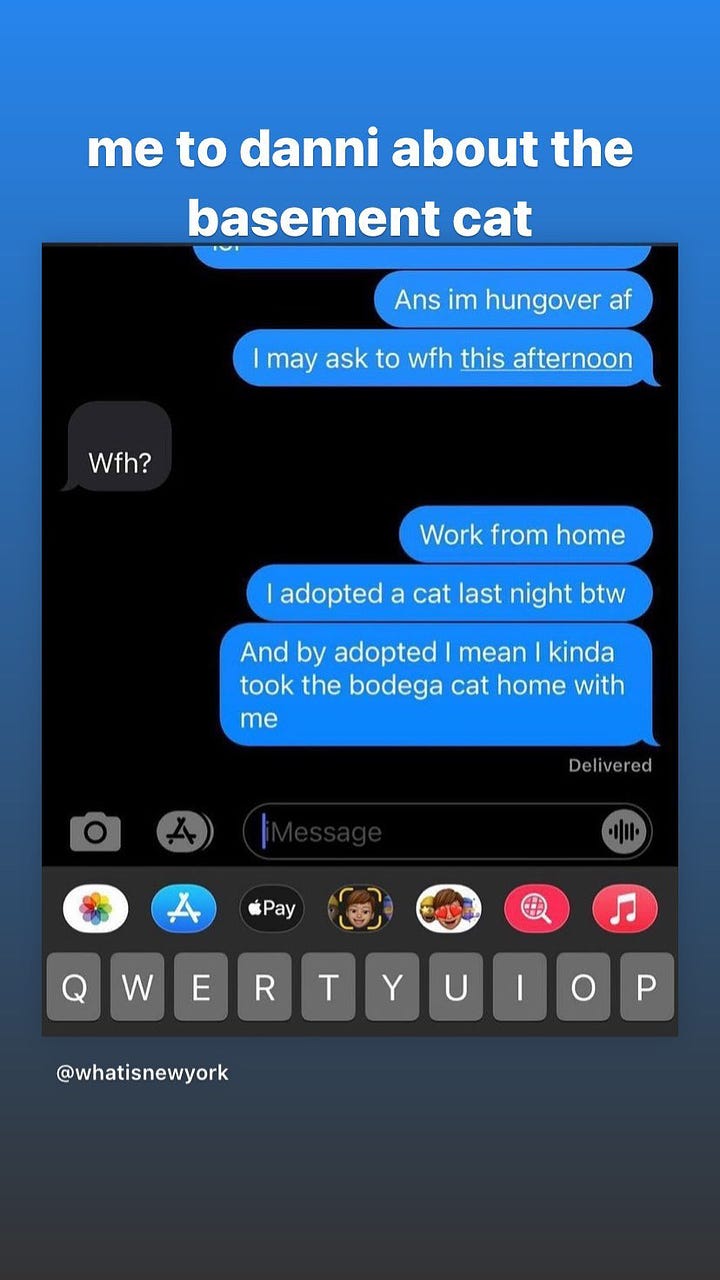
The Universal Cat Distribution System is the theory that cats and kittens will often adopt their owners instead of the other way around. It’s a casual phenomenon but one that many cat owners—myself included—have experienced. Last October, the Culture Vulture wing of Shit You Should Care About published a piece about the UCDS, and the comments underneath the post did not disappoint.
I wasn’t looking for a cat by the time Cat was ready to be placed in a home but as the story goes, I found out she was up for adoption the day after my new apartment began to feel like my home. I do genuinely believe I was meant to find her—that, or she’s a Taylor Swift-level mastermind.
But in case you are looking to make your own luck and adopt a shelter cat (or, at the very least, feel called to do your part in easing the cat overpopulation crisis), I wanted to spotlight some of my Cat’s favorite NYC-based resources:
Emily: Who are some cat-centric creators you think people should follow and get involved with?
Cat: Number one is easily @catsoffbroadway. Always stay hustling, baby.
Emily: Can you give it a break???
Cat: Maybe if you had a fucking business that you were passionate about you would know what it takes to run a fucking business but you don't. So don't even act like you know what I'm talking about.
Anyway, I also really like @puppykittynyc. They’re a nonprofit animal rescue that prioritizes TNR-ing feral cats around New York City and taking in medical cases. They’re always looking for volunteers to feed and socialize cats at a number of their partner locations, and all donations go towards their medical funds. Of course, you can always adopt one of their cats, too…
There are also individuals like @heidiwranglescats and @eccentrickittens who not only do amazing work but offer great information and resources to anyone looking to make a difference for New York cats.
Emily: Wow, Cat! That’s all really great information.
Cat: Literally act more surprised, I dare you.
I’ll admit: I did feel a little crazy at times writing this piece but as I think anyone who has ever met Cat can attest, this probably would be exactly how she would talk if she could. I love her with everything in me and I’m glad she’s now a weird part of the E4P universe.
And yes, her middle name is exactly what you think it is.
It’s unclear if this was the basis for the later European belief that black cats were not only a witch’s familiar but the being a witch herself could transform into.
TL;DR: while there were more black cats euthanized in the shelter, there were more black cats taken in overall. By nature of there just being more black cats, more were ultimately put down.
Charli XCX promo.






